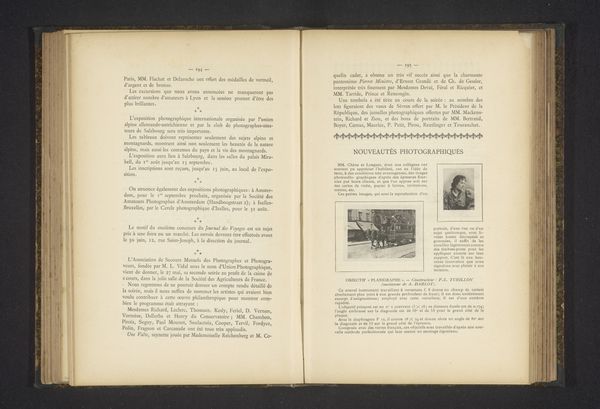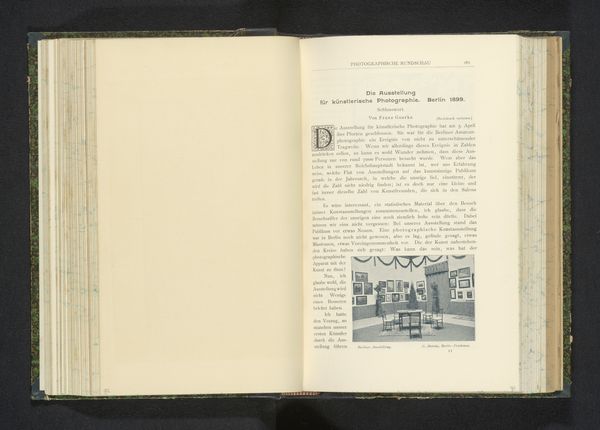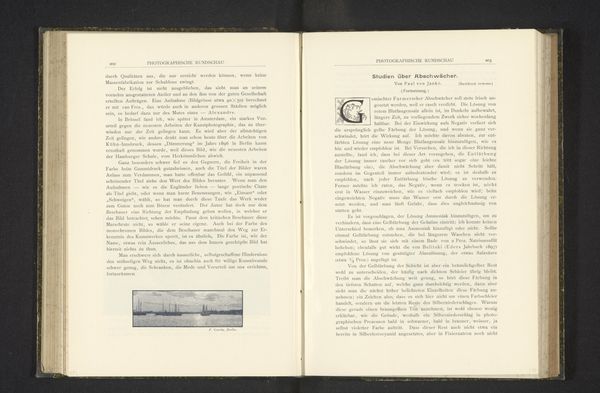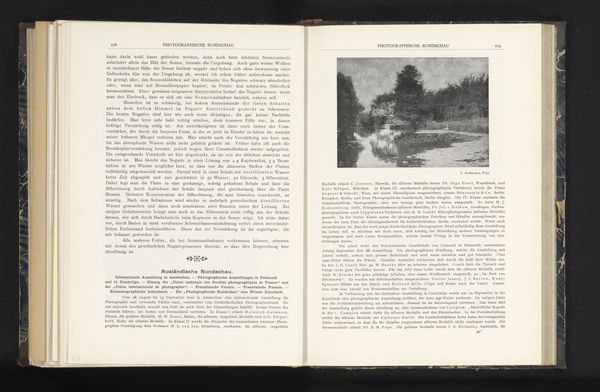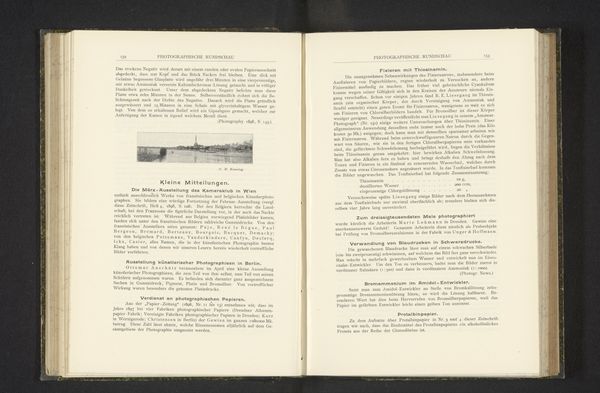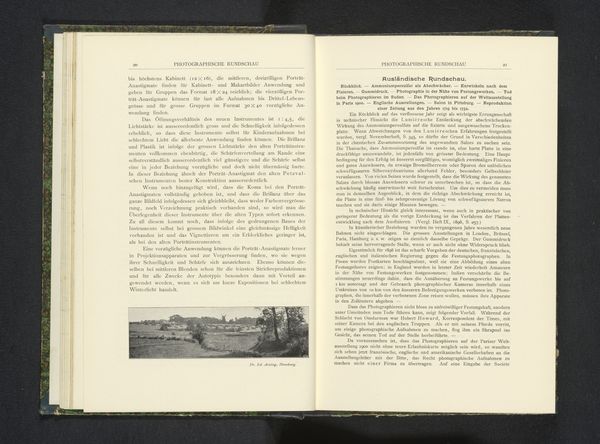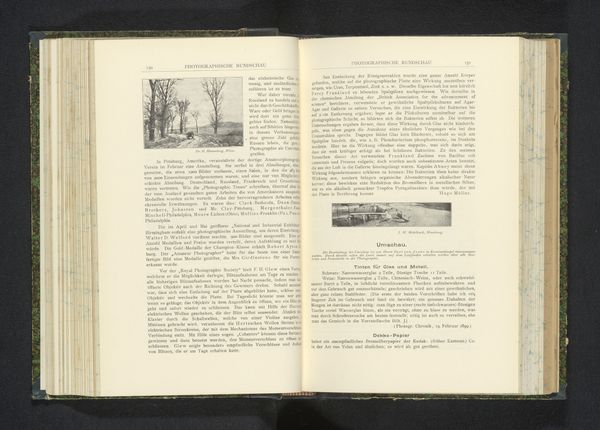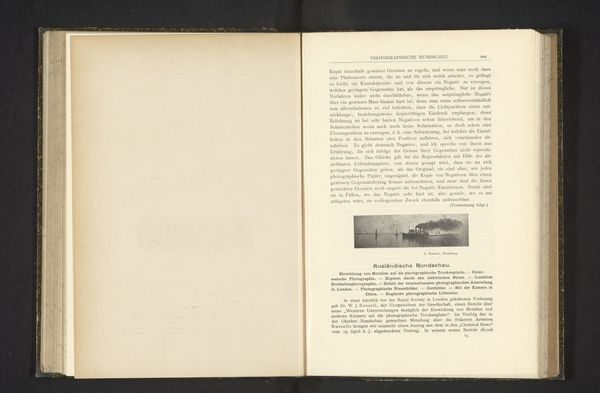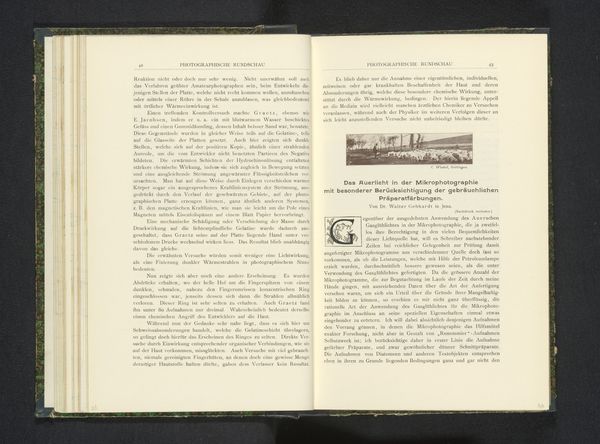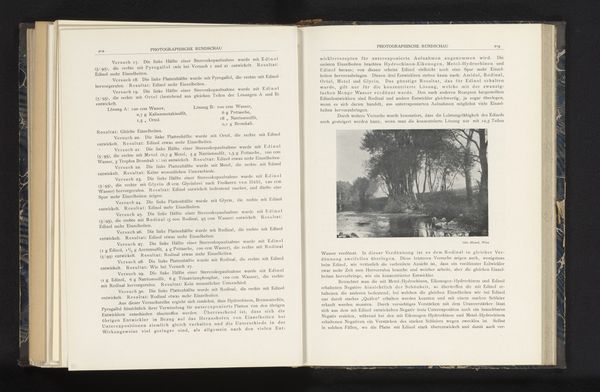
Dimensions: height 100 mm, width 83 mm
Copyright: Rijks Museum: Open Domain
Curator: Here we have "Gezicht op een boerderij," or "View of a Farm," a print made before 1900. What are your first thoughts? Editor: It feels incredibly still and quiet. I noticed that it looks like a photograph printed within a book, which is an interesting use of material for what looks like an impressionistic landscape. How would you interpret this work, thinking about the materiality? Curator: The integration of photography and print raises fascinating questions about the division of labor between artistic creation and mechanical reproduction in the late 19th century. What does it mean to depict the rural using an industrial medium within the craft of bookmaking? It forces us to consider the commodification of both labor and leisure, doesn't it? Editor: I never thought about it that way. That's a great point about labor and commodification. How does the ukiyo-e style connect to that? Curator: Well, Ukiyo-e prints, themselves mass-produced woodblock prints, circulated widely in Europe. So incorporating ukiyo-e aesthetic strategies into photographic reproductions adds another layer of consideration for material origins, artisanal labor versus machine production, and global commodity exchange. Where do you see this aesthetic? Editor: Now that you mention it, the emphasis on the flatness of the image, and how the composition leads your eye around the space... I see what you mean. What would that imply about the viewers consuming the image? Curator: The artist encourages viewers to reflect on how their consumption of landscape imagery – be it painting, photograph or mass-produced print – mediates their relationship to the natural world. To buy and consume this print within a book would invite its owner to connect landscape, production, and object ownership, which feels like a social statement about the rising capitalist era. Editor: That definitely makes me consider photography not just as a tool, but as a statement about industry and even society at the time. Thanks, that’s a new way to think about it for me. Curator: Absolutely, it has me thinking as well, how processes like these blurred distinctions.
Comments
No comments
Be the first to comment and join the conversation on the ultimate creative platform.
